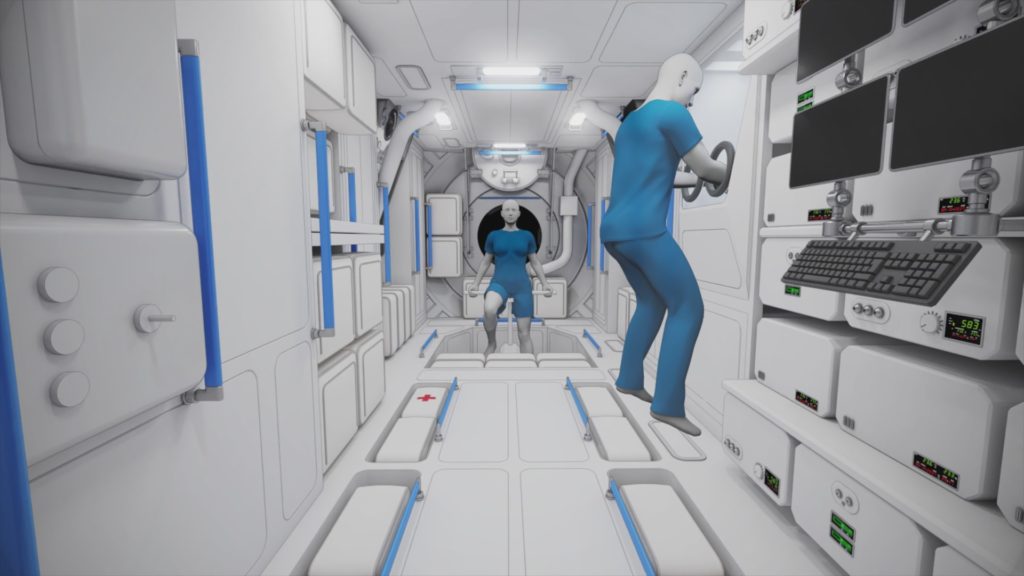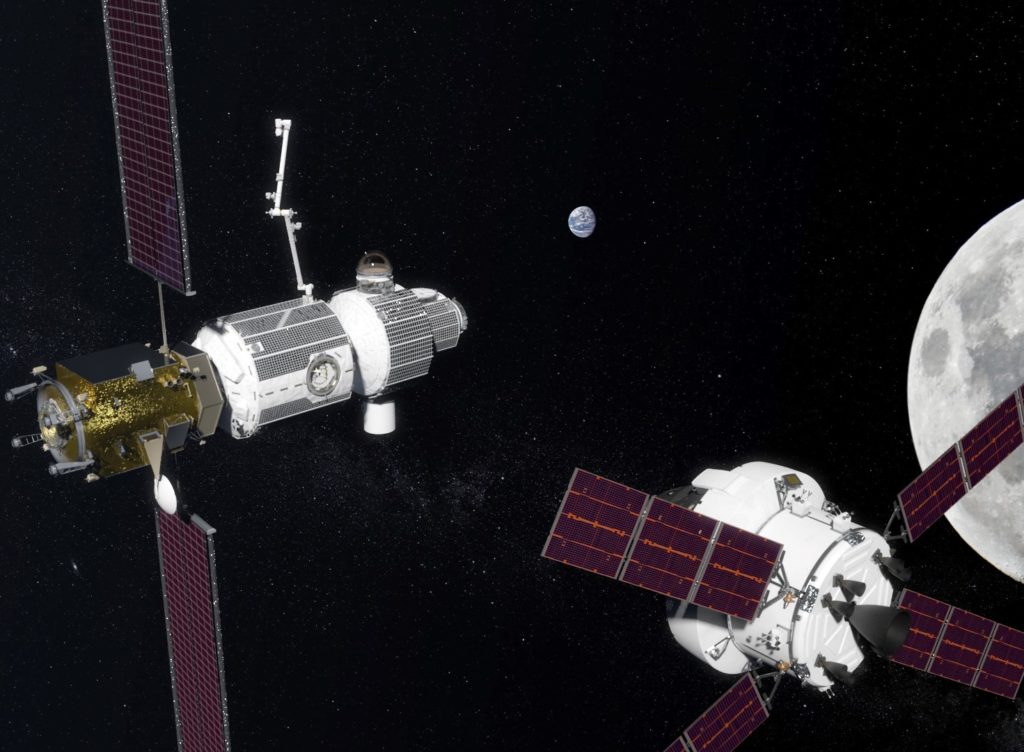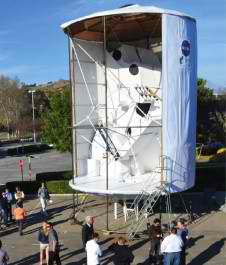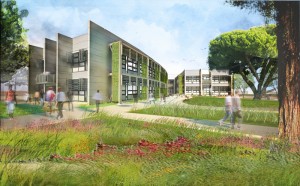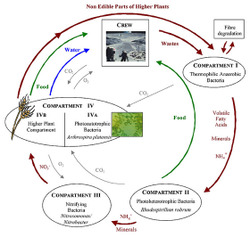Original raisons d’être for the Lunar Gateway were to study long-term human endurance and sustainable life support in a deep space environment, and prepare for missions to Mars and the asteroids. The Lunar Gateway was renamed the Deep Space Gateway as part of the big push for the Artemis program. What is the current state of plans for life support and space habitation on the Lunar Gateway?
Category Archives: Comprehensive
Impact of Deep Space Missions on Life Support Development
The reconfiguration of the Deep Space Gateway into the Lunar Gateway and the accelerated schedule to land humans on the Moon will have significant impact on the development of regenerative life support systems and the sustainability of deep space communities of humans.
The existing International Space Station (ISS) is in low Earth orbit. That orbit provides a microgravity environment, intermediate radiation and some logistic challenges. It also involves a strictly-controlled habitat and severe limitations on plant care due to the severely impacted schedule of astronauts. In contrast, the deep space environment differs from that in low Earth orbit in several ways. First, there is considerably more radiation. Second, low Earth is much better protected by the Earth’s magnetic field. Third, it is more difficult and much more expensive to re-supply deep space.
There has been much evolution of planned deep space human missions by NASA, and hence its partners. At one point, there was a plan to have astronauts visit and retrieve an asteroid. Then the plan was to have a large Deep Space Gateway station that would gain experience for deep space missions and advance life support technology. Then the plan was to place humans on the Moon in a sustainable manner. Now the plan is for a minimal Lunar Gateway and a human landing to the Moon by 2024 and worry about sustainability after that milestone.
A common denominator among the plans has been the need to use the NASA Space Launch System (SLS) rocket and the Orion crew capsule. The SLS is an extremely powerful vehicle in terms of both propulsion and political clout. It will return some of the capabilities to NASA that were lost with the discontinuation of the Saturn V system. Since NASA has been strongly encouraged by the President to land humans on the Moon by 2024, private vehicles are now under consideration as well, if they can help achieve the deadline.
The original configuration of the Deep Space Gateway included a life support module that would have allowed the gateway to support astronauts with fewer resupply missions. It probably would have included a plant growth component.
However, due to the acceleration of a manned lunar landing mission, the Deep Space Gateway reconfigured minimalist approach focuses on providing an assembly node for short manned missions to the Lunar surface. There would also be a propulsion module and possibly an airlock module. A lunar lander would be ferried to the Gateway and the an Orion capsule would take astronauts to the Gateway. The astronauts would take the lander to the Moon for a few weeks, return to the Gateway and return to the Earth via the capsule. However, there will not be an enhanced life support module (at least not until much later).
According to a NASA source, after humans return to the Moon, then the Gateway and lunar base could focus on keeping people there on a sustainable basis. So plants in a long duration life support module might have to wait until after 2024.
The bottom line is that funding for deep space life support and sustainability will be likely delayed. If there are other cost overruns, life support and the biological sciences can get cut disproportionately. Since sustainability is untimely a cost-saver, this means that deep space communities will be more expensive for the foreseeable future, due to greater resupply expenses. The only silver lining is that there will be more time to “get it right” for sustainable life support technologies.
References
- Q&A: NASA’s New Spaceship (Dec. 9, 2018)
- Multilateral Coordination Board Joint Statement (March 5, 2019)
- NASA Begins Testing Habitation Prototypes (March 27, 2019)
eXploration Habitat (X-Hab) Academic Innovation Challenge 2015
The eXploration Habitat (X-Hab) 2015 Academic Innovation Challenge is a university-level competition involving hands-on design, research, development, and manufacture of functional prototypical subsystems for space habitats and deep space exploration missions. The Advanced Exploration Systems (AES) Exploration Augmentation Module (EAM) project will offer multiple X-Hab awards of $10k – $20k each.
NASA will benefit from the challenge by sponsoring the development of innovative concepts and technologies from universities, which will result in innovative ideas and solutions that could be applied to exploration.
NASA Ames Sustainability Base wins 2013 GEELA Award
NASA Ames Sustainability Base wins a 2013 GEELA Award for the category of Sustainable Practices or Facilities. The GEELA Program, which stands for Governor’s Environmental and Economic Leadership Awards, is run by the California Environmental Protection Agency (Cal/EPA).
Introduction
NASA’s first sustainable space “settlement” is located in the heart of Silicon Valley, at the NASA Ames Research Center in California. “Using NASA innovations originally engineered for space travel and exploration, the 50,000 square-foot, lunar-shaped Sustainability Base is simultaneously a working office space, a showcase for NASA technology and an evolving exemplar for the future of buildings.” (Ames website). Through a combination of NASA innovations and commercial technologies, Sustainability Base leaves virtually no footprint.
ESA Closed Loop Life Support
The European Space Agency’s MELIiSSA (Micro-Ecological Life Support System Alternative) research program “aims to develop the technology required for a future biological life support system for long term manned space missions.” In fact, MELISSA claims to go “further than other recycling systems used on Mir or the International Space Station which purify water and recycle exhaled carbon dioxide”, by attempting to “recycle organic waste for food production.”
See full article.
CELSS As A Paradigm for Sustainable Technology
NASA has been working on various aspects of Contained Environment Life Support Systems (CELSS). Much of this work could be applicable to solving the sustainability challenges faced by the human race. See full article.

